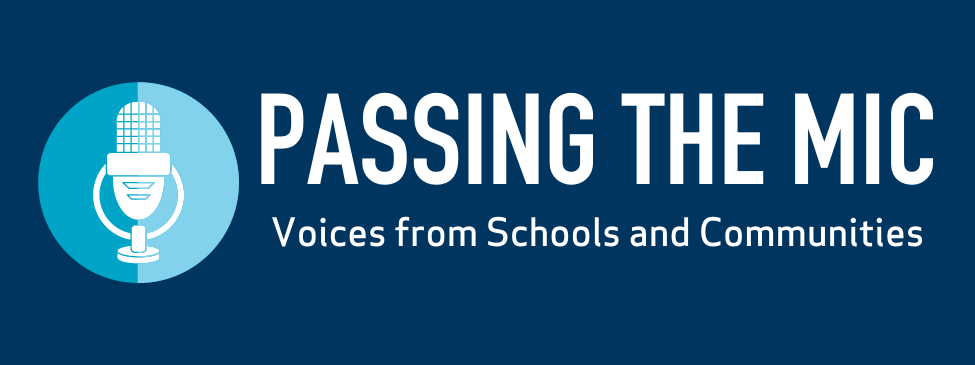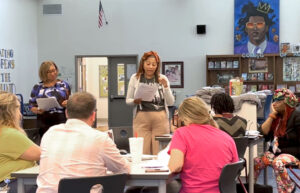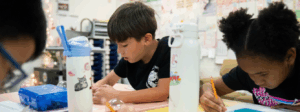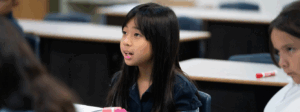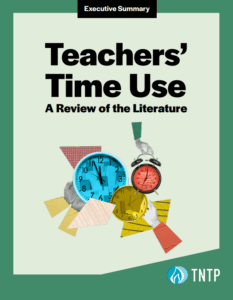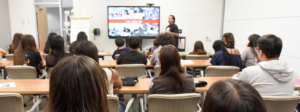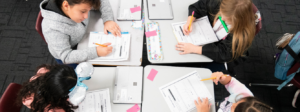The COVID-19 crisis has forced schools to confront unprecedented challenges. System leaders and educators have already done heroic work to offer stability for students and families by providing meals, home learning resources, and online instruction. But even tougher tasks lie ahead as next school year approaches—planning for a range of instructional models as the epidemic evolves, staffing schools using entirely virtual hiring processes, and helping students make up for lost learning, just to name a few.
In our new video series, Passing the Mic, we’ll hear from the superintendents, principals, teachers, and others who are grappling with these challenges every day. Each episode will be a candid conversation about what’s working, what’s not, and what we still don’t know about ensuring students get the educational opportunities they deserve during this difficult time.
Our first guest is Pedro Martinez, superintendent of the San Antonio Independent School District. Mr. Martinez spoke to TNTP’s CEO, Dan Weisberg, about the district’s innovative work to reach students and bridge the digital divide while schools have been closed, the importance of partnering with communities on plans to reopen, and strategies for helping students catch up academically next year. You can watch the entire conversation above or here, and you can find all episodes of Passing the Mic here.
Nobody would wish this crisis on anybody, but it being upon us, are there some opportunities for you to advance the mission that you have laid out to really support underserved families?
Probably the best example I have is this issue around the digital divide. I think for the first time, we’re having more national conversations about it. And I think we now see first of all the power of having technology, and having the ability to deliver digital lesson plans, because as I think about the future, I definitely want this to change the way we do homework, the way we help students with maybe some additional activities to help them build concepts or to master standards. But what’s also clear is homes are not created equal, and neighborhoods are not created equal.
We’re actually building a fiber network across every square inch of our district. We’re one of the few districts in the country that has done it. But it’s a tricky issue, because as you know, there’s a lot of federal restrictions, and because cable companies and telephone companies don’t want districts competing with them. But I’m not trying to get Netflix to our kids. I’m trying to get digital lesson plans. But this is a great example of how this pandemic has given us the opportunity to think out of the box and to be more creative. And it’s another example of how our students who have means not only have a lot of assets in terms of their parents and their ability to help them with school work, but with access to technology. My board president said in a newspaper article—you know, they asked her, “Well, are you looking forward for things going back to normal?” And she said, “Normal wasn’t that great for us, so I don’t want it to go back to normal. I want it to be better.” And so, we’re not wishing for it just to go back the way it was. We want it to be better.
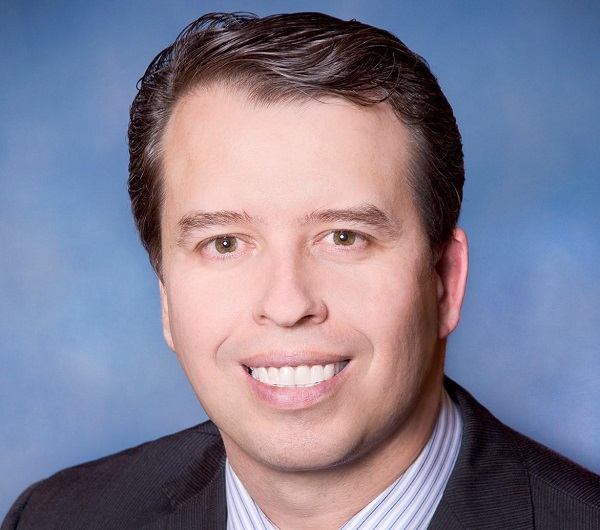
San Antonio ISD Superintendent Pedro Martinez.
One of the things that you have done at SAISD is prioritize contact with each and every student, and last at least I read, you have been successful in contacting 96 percent of your students. This may sound to folks not in schools or school systems like an easy thing, but it is not an easy thing. What did it take to get in touch with 96 percent of your students, and what will it take to get in contact with the other 1,500 or so?
We created a tool to track contacted students. It was mainly driven by the concerns that our staff had about the kids, about the students, that many of these students are so vulnerable that if we’re not in touch with them, we know they’ll go hungry. Initially, when we did the first set of just figures, there was 20% of our students we weren’t able to get ahold of, and that of course put a panic in all of us, so we had a sense of urgency. It was all hands on deck, because we wanted to get them devices. We knew they didn’t have internet connectivity. So, for us, the purpose was very clear. It was not only to get in touch with them, it was to provide resources to them.
And so, we did that, and we had a massive distribution of devices, and hot spots, and we also expanded our meals. We’ve reached over a million meals served. We’re doing over 60,000 meals a day right now, and so for us, it was about getting them just the basic needs for those families. We also know we have cases of COVID across our community, so we’ve been getting them resources from the city and the health department for many of these families, again, who are just so poor, they don’t have health insurance. They don’t have basic resources.
There’s about 1,600 students we haven’t reached. What we were planning this week was to do block walking, but we just got word from our mayor that he feels it’s too dangerous. So, now I’m right back to the drawing board about how do I find these 1,600 students, because we’ve tried everything, Dan. From calling, texting, talking to their colleagues. One funny story: One of my principals saw a news story about one of our families—it was a great, positive story—and in the background was another student that we were trying to find. So, immediately he called that student and said, “Hey, I need to find this other student,” and we were able to get in contact with them.
So, you have announced that school is going to reopen in August. Your team is already involved in a massive planning effort. Anybody who has worked in a school or district knows that school opening every year is a massive effort. This year, obviously, many times more difficult. Just talk about what you are prioritizing for your team, for your educators, as they start to plan for what next year is going to look like in a very uncertain environment.
Number one is that we have to build confidence with our community. My concern has been that the longer parents and children are required to stay at home, the more fear that’s going to be created. And so, the number one question we are asking ourselves is how do we make parents feel comfortable that our schools are safe? And so, one of the things we’re planning to do is to have in June, parent meetings, where they can see all the procedures we’re putting in place. We’re following all of the health guidelines, and so we’re actually analyzing every classroom around social distancing, knowing how many children we can have in each classroom. We’re looking at staggered schedules. So, we really want to run those ideas with parents and staff, because our belief is that’s the way we’re going to get through this, and the way we’re going to be able to open up our school year.
But just because you open schools up doesn’t mean students are going to come. And so for us, we want to emphasize just that we literally are dotting every I and crossing every T around safety. Now, in order to make these decisions correctly, we know that we have to do it together with parents and with staff, and so every one of my principals across 100 schools will be having parent meetings. But we know we’re going to have some parents saying, “I don’t think I’m going to feel safe sending my child.” And I say, “That‘s okay. We’ll have a plan for you, too.”
You’ve also made it clear that this is not the time to slow down on academics. But if you follow these debates, some people think that putting demanding material academically in front of kids is going to have a negative effect on their emotional well being. Talk about what would you say to folks who think those two things are in conflict.
I would argue that the reason we have this tension is because we slow things down. If you really want your children to do well emotionally and mentally, the way to do that is to accelerate their instruction and build the confidence. I always tell our staff, “You’ve got to build their armor.” This world is not kind to poor kids. It’s just not. People just have expectations about what individuals are supposed to be able to do, and when they can’t do them, they get judged. Nobody cares if they came from a poor environment. And so, what I tell our teachers, you got to build their armor. So, I would challenge anybody to say that these things are odds. I actually believe that the issues that children have are because we don’t accelerate instruction. The SEL issues we have are because we keep children behind.
If you were talking to a young person who is coming into high school in SAISD next year, and with all the hopes, and aspirations, and energy, and worries, and concerns, what would you say that he or she should expect for their high school career in SAISD, and what commitments do you want them to hold you to?
I want our students, incoming high school students, to know that we want to prepare them to be leaders. We want to prepare them to have high aspirations, so we have over 80% of our students in this graduating class that got accepted into college. I’m worried about whether all of them will go, because some of them are changing their college plans to work, and to be closer to family, and I understand it, but we’re trying to still build up their confidence. My goal is to match our students with their passion, and I would tell them look, we’re going to get through this crisis. We’re going to look back at this and it is going to be an unprecedented time, but this is when I need our young people to have even higher aspirations, because we know that, again, poverty is still with us. And it’s going to be with us even after this pandemic. And the only way that I’ve ever seen to change poverty is through education. It’s the only thing that I’ve seen that has ever worked consistently, and I’m an example of that in my own personal life.
